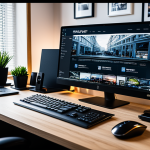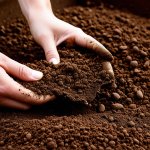Understanding Pool Flow Dynamics
Delving into pool flow dynamics is crucial for maintaining the quality of your swimming pool water. At the heart of these dynamics is the interaction between different components, particularly the careful configuration of return jets. Proper pool flow ensures that water is circulated efficiently, preventing stagnation and promoting effective filtration.
Importance of Pool Flow
Pool flow directly impacts water quality through its role in filtration and chemical distribution. A well-balanced flow means efficient removal of debris and consistent distribution of sanitizers, which are vital for maintaining clean, safe water.
Topic to read : Transform your uk garden: innovative pool ideas for compact spaces
Factors Impacting Pool Dynamics
Several factors affect the dynamics of a pool. These include pool shape, size, and local environmental conditions such as wind or surrounding structures. Understanding these variables is key to optimizing water circulation and ensuring a healthy pool environment.
Role of Return Jets
The return jet configuration is essential in influencing the circulation and filtration efficiency of your swimming pool. These jets should be strategically positioned and angled to promote even distribution of water and chemicals. This enhances the overall flow, minimizes dead zones, and supports effective filtration.
Topic to read : Elevate your uk garden haven: expert tips to make your swimming pool the centerpiece of your outdoor sanctuary
By understanding and optimizing pool flow and swimming pool dynamics, you ensure not only the aesthetic appeal but also the health and safety of your swimming environment.
Fundamentals of Return Jet Configuration
Understanding the return jet setup is key to enhancing the performance and efficiency of your pool’s water circulation system. The configuration guidelines begin with identifying the key components of return jets, which include the nozzle type and the direction in which it is pointing. These components work together to direct water back into the pool, ensuring it flows evenly across all areas.
Optimal Angles and Positions
The effectiveness of swimming pool return jets hinges largely on their positioning and the angles at which they are set. For optimal water distribution, jets should be angled downward at approximately 45 degrees. This allows the circulation to push water across the pool’s bottom, promoting thorough mixing of chemicals and even temperature distribution. Aiming the jets in a circular pattern often aids the current to cover more ground, avoiding stagnation.
Common Configurations for UK Pools
In the UK, pools commonly benefit from configurations that cater to local conditions. This often means configuring jets to work with the natural current direction instigated by prevailing winds. Configurations may also take advantage of the pool shape; for example, in rectangular pools, placing jets along longer walls generally facilitates a more balanced flow. By tailoring the jet placement to the unique design and location of your pool, you achieve an enhanced water flow and overall better quality swimming environment.
Factors Influencing Optimal Return Jet Configuration
Understanding the flow factors that impact the performance of return jets is essential for optimizing your swimming pool’s dynamics. The shape and size of your pool profoundly influence how effectively jets circulate water. Pools with irregular shapes may require customized jet setups to ensure optimal flow patterns, whereas standard rectangular pools benefit from straightforward configurations along longer walls.
Environmental conditions also play a crucial role. Wind direction, for instance, can impact water movement across the pool surface. If your pool is in a particularly windy area, adjusting your jet angles to work with rather than against predominant winds can enhance water circulation.
Assessing your pool’s current circulation patterns allows you to refine the configuration of your jets. Regular monitoring and adjustments help maintain efficiency and ensure a balanced water flow, thereby supporting filtration effectiveness and chemical distribution. By acknowledging these elements, you ensure your jet setup is attuned to the unique characteristics of your pool environment, promoting overall water quality and enjoyment.
Troubleshooting Common Flow Issues
Addressing flow problems in your swimming pool is essential for maintaining optimal water circulation and ensuring the effectiveness of your return jet configuration. Recognizing common issues can be the first step in diagnosing problems that may arise.
Identifying Signs of Poor Circulation
Often, poor circulation manifests as visible stagnation or uneven distribution of chemicals, leading to cloudiness or algae growth. If the surface and bottom show signs of debris accumulation, it’s time to assess your jet performance. Inefficient jets may cause noticeable discrepancies in water temperature and chemical concentrations across the pool.
Common Troubleshooting Steps
To troubleshoot pool jets, first check for blockages or malfunctions within the jets themselves. Sometimes, simple adjustments to the jet angles can resolve circulation problems. Cleaning the filter system regularly and ensuring the pump is functioning correctly are also critical steps. If the issue persists, consider recalibrating the jets to optimize the flow dynamics.
When to Seek Professional Help
In cases where basic troubleshooting does not resolve the issue, consulting a professional can provide valuable insights into more complex flaws in your system. Persistent flow issues could indicate deeper problems such as undersized pump or inappropriate jet placement, requiring expert diagnosis and solutions to ensure your pool runs smoothly again.
Regional Considerations for UK Swimming Pools
Navigating the landscape of UK pool standards involves adapting to specific regulations and guidelines unique to the region. Local water quality standards dictate that pools must maintain optimum water cleanliness and circulation, underscoring the importance of pool dynamics in this context.
Regional Guidelines and Local Influences
The UK’s climate and its variable weather patterns can significantly impact swimming pool performance. Factors such as wind, rain, and temperature shifts alter water movement, necessitating adjustments to your return jet configuration. Understanding these local influences aids in crafting a tailored approach to maintain effective water circulation.
Adapting Return Jet Setups
Return jets in UK pools may require unique setups to counteract regional climatic effects. In areas prone to frequent rainfall, managing excess water influx becomes crucial. Configuring jets to accommodate quicker drainage and support uninterrupted flow is essential to prevent overflow and stagnation.
Moreover, temperature fluctuations can affect chemical distribution, demanding more attentive jet adjustments during seasonal changes. For colder climes, insulating pool pipes and adjusting jet angles can help maintain consistent flow, ensuring your pool remains inviting and operational from one season to the next.
Practical Tips for Configuration Optimization
Optimizing your pool’s return jet configuration is essential for maintaining healthy circulation and effective filtration. Here are some pool tips to help you achieve this.
Start by setting up the return jets correctly. Ensure they are evenly spaced around the pool to cover all areas. A common configuration advice is to angle jets downward at about 45 degrees for optimal water flow, pushing circulation to the pool bottom and creating enhancing water flow. It’s beneficial to adjust jet angles in a circular pattern to avoid stagnation and promote consistent chemical distribution.
Routine maintenance is crucial for sustaining optimal flow. Regularly clean filters and check that jets remain unobstructed. Inspect the pump to ensure it’s running efficiently. These steps not only help maintain pool tips but also ensure long-term effectiveness.
Consider seasonal adjustments in the UK, where climates can impact pool operations significantly. During colder months, enhancing water flow with adjusted jet angles can prevent water from freezing. In heavy rainfall areas, ensure your system manages excess water to prevent overflow. Acknowledging these elements ensures your pool remains inviting and efficient all year round.




